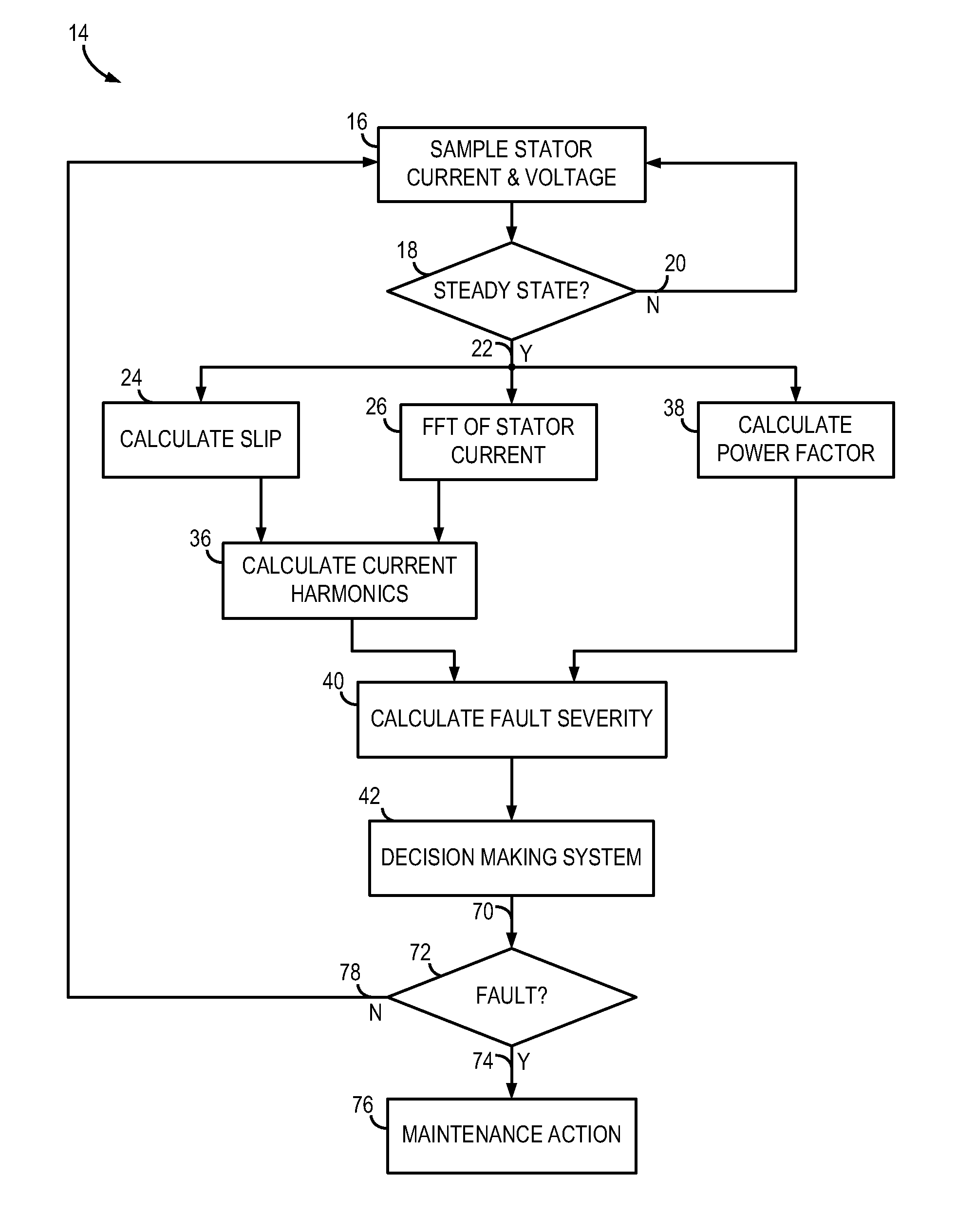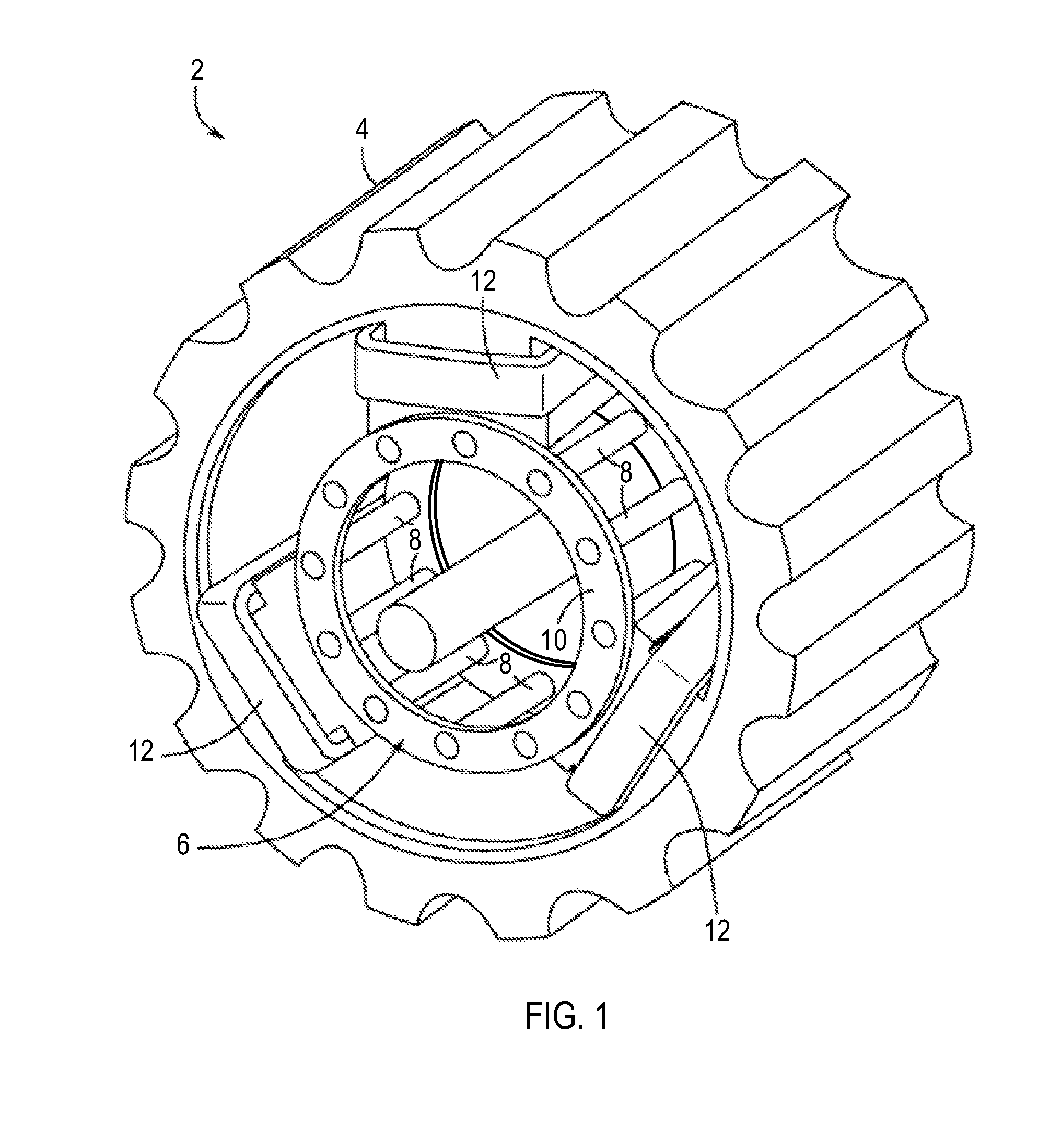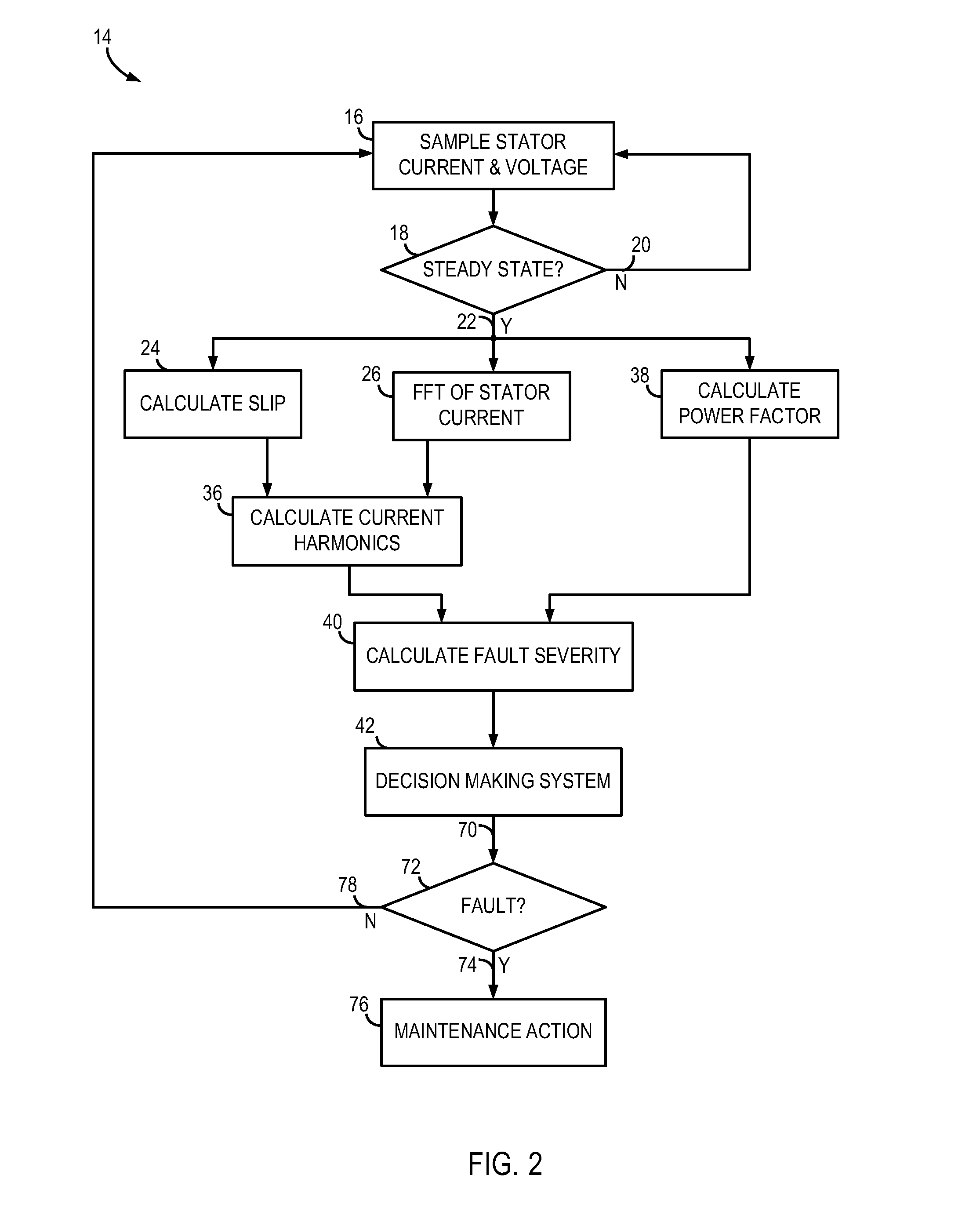System and method for detecting fault in an AC machine
a fault detection and fault technology, applied in the field of induction machines, can solve problems such as rotor cage failure, rotor cage failure is one of the most common failures, and the opening or shorting of the phase winding
- Summary
- Abstract
- Description
- Claims
- Application Information
AI Technical Summary
Benefits of technology
Problems solved by technology
Method used
Image
Examples
Embodiment Construction
[0028]Several embodiments of the invention are set forth that relate to a system and method of detecting a rotor cage fault in an AC induction machine. The system monitors current and voltage and performs a current analysis to generate a fault index indicative of the severity of a rotor fault condition.
[0029]FIG. 1 illustrates an AC induction machine 2 comprising a stator 4 and a rotor cage assembly 6. AC induction machine 2 may be a motor or generator, according to various embodiments of the invention. Rotor assembly 6 includes a number of rotor bars 8 coupled to an end-ring 10. In operation, current flows through stator windings 12 creating a magnetic field that induces current flow through rotor bars 8. When a rotor failure occurs, such as a broken rotor bar or broken end-ring, current cannot flow through the broken rotor component, which results in an unbalanced rotor flux. The unbalanced rotor flux, along with speed and torque oscillation caused by the broken rotor component, i...
PUM
 Login to View More
Login to View More Abstract
Description
Claims
Application Information
 Login to View More
Login to View More - R&D
- Intellectual Property
- Life Sciences
- Materials
- Tech Scout
- Unparalleled Data Quality
- Higher Quality Content
- 60% Fewer Hallucinations
Browse by: Latest US Patents, China's latest patents, Technical Efficacy Thesaurus, Application Domain, Technology Topic, Popular Technical Reports.
© 2025 PatSnap. All rights reserved.Legal|Privacy policy|Modern Slavery Act Transparency Statement|Sitemap|About US| Contact US: help@patsnap.com



